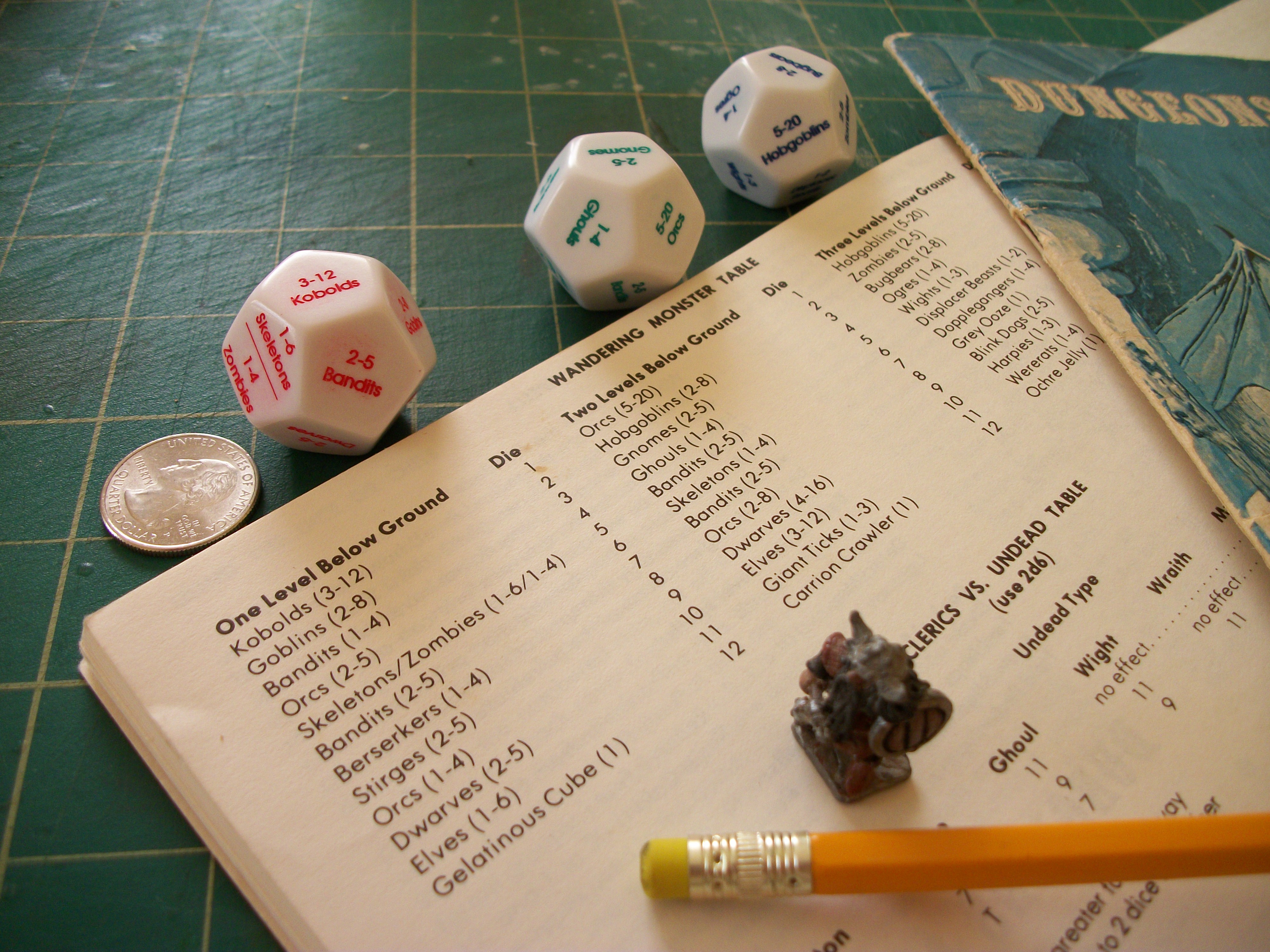Seriously, these are not only beautifully illustrated but so labyrinthine that there is a two-page flowchart to guide you through them!
I also have enjoyed using random encounter tables in D&D (there was that one time with a roc and a grappling hook and a near TPK - glorious!), although I'm more suspicious of their use in preparing a gameworld as the blindly procedural dungeon of old strikes me as unsatisfying. I prefer using them as inspiration, or to quickly drum up NPCs, or to determine treasure found... Which brings me on to my actual point:
How did I not know about "drop tables"?!
Noodling around the internet looking for sewer map inspiration (No need to be afraid, Averaigne players... mwhahahah), I found this thing of beauty:
It's by Kelvin Green and at that link there's a slightly reworked version by Dyson Logos. I can see myself using this!
Here's another that allows instant character generation for AD&D, nicely set up in a box:
Inspired to look for other nifty approaches, I found some that didn't appeal (one rather tortuously complex hit-location table that tried to deal with the abstraction of hit points) but also one that struck me as useful for the dungeon master who wants to reduce the number of tables they need open at any one time:
They really appeal to me for some reason. They're by Eric Harshbarger and look like they cost $20 a set. I wonder if I could use the school lasercutter to engrave my own dice...
With that, being the educator I am, it's time to set you some homework - what drop tables do you know of, and are they worth using? You have until my next post to submit your answers, and links must be provided.
Class dismissed,
Rab





Ooh! I like the idea of the drop table. That's a really interesting mechanic. I wonder if they'd be useful to use instead of special events cards. When you roll your dice to hit or wound, where they land on the drop table is as important as the number. Hmmmmm.....
ReplyDeleteQuite! It seemed like an elegant idea if set up thoughtfully.
Delete